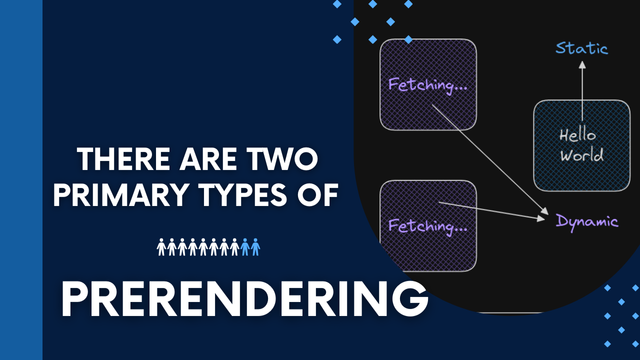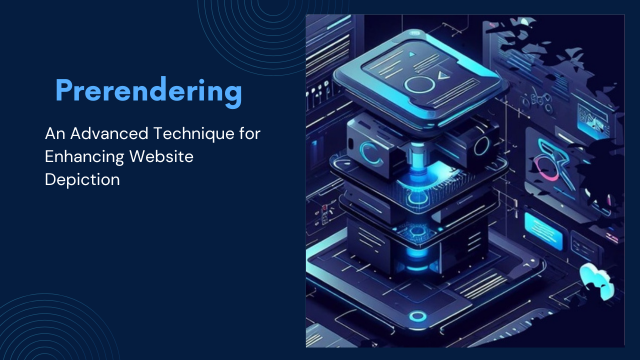Prerendering: An Advanced Technique for Enhancing Website Depiction
Website speed is crucial when considering user experience in today’s ever-growing realm for internet and digital products. Delayed loading of the websites deters future patronage by affecting the bounce rate through user dissatisfaction. The most beneficial ways of enhancing the web performance involve are prerendering. This strategy is most helpful for SPAs and website with heavy content where speed is of much importance.
What is Prerendering?
Prerendering can be defined as a process of rendering or preparing some part or entire HTML page along with its contents before it is asked for by the user. It entails the precompiling some of a page’s HTML, CSS, and Javascript on the server then sending rendered HTML to the client rather than waiting for the browser to render the page from scratch when the page is required by the client. This can significantly shorten loading time because a complete page is requested from the server in contrast to gradually assembling the end product via Ajax calls.

There are two primary types of prerendering:
1.Static Prerendering:
This process involves creating plain HTML that can be delivered to the user at that very moment. This is best for web sites or some specific web pages with unchanging content, like blog, or marketing web page.
2.Dynamic Prerendering:
In this approach the content is pre built on the server side for each user request that is made. It is perfect for sites that have various data to share with the targeted users, such as e-stores or personal accounts.
How Does Prerendering Work?
When a page has been prerendered, the server analyzes the content of the page and establishes a html copy of the content. It is then stored and provided to users as this kind of content is referred to as static. The prerendering’s main benefit is the fact that the server performs all the work before loading the page so the user gets a fully rendered content without further processing by the browser. Of all the web apps it is especially helpful for Single Page Applications (SPAs). Web SPAs heavily depend on JavaScript programming to load content, depending on the user’s interaction with the website. There are advantages and disadvantages to this approach: flexibility, clean design and transitions; however, larger code size and potentially long time to load the first page. To do this, developers need to prerender the content of the actual Single Page Applications, in order for the users to get nearly instant first-load time, while still maintaining the ‘offline-like’ feel of single page applications
Benefits of Prerendering
1. Improved Load Times: Since content is being pre-rendered user can get a feeling of faster page load which is imperative for enhancing user experience and lessening bounce rates.
2.SEO Optimization: Pre-rendering of content is easier to be indexed by the search engines than the content created with the help of dynamic JavaScript rendering. Doing this could increase your chances of obtaining a good search engine position and subsequently increased visibility of your website.
3.Reduced Server Load: The use of prerendering means that excessive load on the client side will be minimized and the browser will not have to download large scripts and then render it and the page.
4.Enhanced User Experience: A fast, responsive website is always superior, which means that it will always have high click through rates and use rates. Web Tools and Framework for
Prerendering There are tools and frameworks
that help make prerendering more possible enabling developers to implement it. Some popular options include:
- Prerender.io: A service that takes advantage of the cloud to prerender web pages on the server and deliver them to the client as easily cached HTML.
- Next.js: One of the most utilized React frameworks that actually have support for prerendering pages during the build process. Nuxt.js: It is a framework based on
- Next.js, but tailored to Vue.js to provide complex prerendering and helpless static site generation.
- Gatsby: A web application tool built on React–based for generating static web sites and automatically generating static HTML for the sites.
Prerendering and when should you use
it is a topic worthy of a separate article since this method is used in a wide variety of contexts and has numerous advantages. The use of prerendering is most ideal for content that does not go through changes regularly or content that goes out for real time data. For frequently updated sites or applications, using the technique of prerendering, is not very effective as for static sites or applications. Rather than this, other approaches such as SSR or CSR may be more effective. However, for BLANK, BLANK, or BLANK, storing pre-rendered links can be a miracle worker in terms of loading time ramp-up or SEO advantages.
Conclusion
Prerendering is a great technique that must be used to enhance the speed and interaction of most current websites with the Online environment, particularly with SPAs and significant content segments. Through pre-caching, websites provide an opportunity to deliver faster loading pages, better search engine ranking, and improved user experience. Since the performance of web sites remains a significant aspect of the experiences as well as the retention of customers, the integration of prerendering should be a solution that enables the developers to wager and provide enhanced web sites.
ALSO READ THIS; Egochi The Best Milwaukee SEO Company Changing the Face of Internet Marketing
Egochi The Best Milwaukee SEO Company Changing the Face of Internet Marketing

